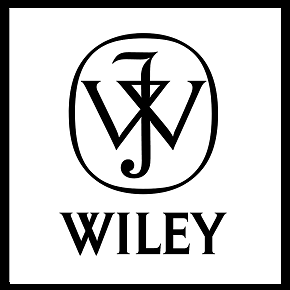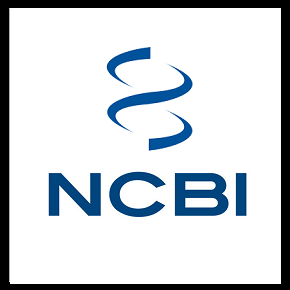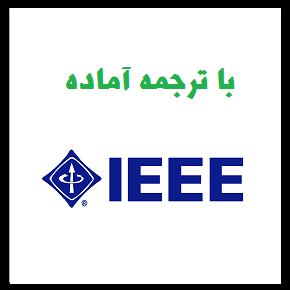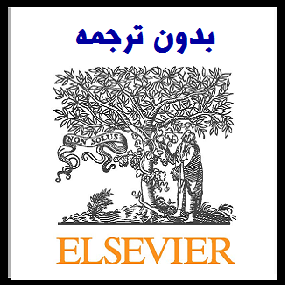مقاله انگلیسی مدلاسیون کدگذاری شده زنجیره ای برای دستیابی به شبکه نوری (2018 IEEE)


| عنوان فارسی مقاله | یک مدلاسیون کدگذاری شده زنجیره ای نوین مبتنی بر GFDM برای دستیابی به شبکه های نوری |
| عنوان انگلیسی مقاله | A Novel Concatenated Coded Modulation Based on GFDM for Access Optical Networks |
| ترجمه کامپیوتری فهرست مطالب | چکیده 1 مقدمه 2 اصل مدل سیستم 3 راه اندازی آزمایشی و نتایج 4 نتیجه گیری منابع |
| فهرست مطالب | Abstract ۱ Introduction ۲ Principle of System Model ۳ Experimental Setup and Results ۴ Conclusion References |
| نمونه ترجمه کامپیوتری | چکیده
در این مقاله، ما یک مدولاسیون کدگذاری مختلط جدید ساخته شده از کد توربو تطبیقی با مدولاسیون کدگذاری مدولاسیون (ATTCM) ارائه دادیم که بر اساس سیستم چندرسانه ای فرکانس تقسیم شده (GFDM) است. طرح پیشنهادی دارای کمبود پیچیدگی است و بهره وری طیفی بالا و افزایش قابل توجه برنامه نویسی را فراهم می آورد. یک آزمایش با GFDM سیستم مدولاسیون کدگذاری مختلط 4 Gbit / s با روش پیشنهادی با موفقیت نشان داده شده است. نشان داده شده است که سیگنال مدولاسیون کدگذاری مختلط (ATTCM 32QAM) دارای امتیاز 2.3 دسی بل در برابر سیگنال TCM32QAM در نرخ خطای بیت 1E-3 است. این مقاله یک راه حل چشم انداز برای نسل پنجم نسل پنجم نسل پنجم سیستم دسترسی است. 1. مقدمه At present, the dramatic growth of services demands of the optical fiber communication increases rapidly. Optical access network is a strong candidate for connecting the backbone network with the end users, which provides high speed and high reliability for bandwidth hungry applications [1], [2].Currently commercial access systems mainly apply lean single carrier, However, the increasing demands of users are pushing forward to extend bandwidth resources, the multicarrier technology has been proposed in the past few years, fourth generation (4G) cellular systems based on OFDM technology have been optimized to provide high data rates and reliable coverage to mobile users [3]. Nevertheless, OFDM is susceptible to inter-carrier interference and synchronization errors. Additional overhead such as cyclic prefix (CP) is needed to alleviate the interference [3]. While generalized frequency division multiplexing (GFDM) based on multicarrier filter bank is a strong modulation technique for the fifth generation (5G) standard [4]–[۷]. The main characteristic of GFDM is low out of band emission, insensitive to frequency offset and phase noise. Cyclic prefix is added to each GFDM block instead of each GFDM symbol. The peak-to-average power ratio (PAPR) can be reduced by designing the flexible pulse shaping of individual subcarriers [6], [7]. In addition, GFDM technology with high spectral efficiency enables the access system to support a huge number of optical network units. They are more susceptible to transmission impairments from channel and components in optical access network, which leads to inter-symbol interference (ISI) and degrade the performance of the system [6]. Therefore, the forward error correction (FEC) codes can be employed to improve the BER performance by providing extra gain to the optical access network; it is a powerful technique to increase the system’s margin [8]–[۱۰]. Turbo code as one of the FEC code, has very good performance for error correction. It not only has superior performance in high noise environment, but also has strong anti-fading and anti-interference ability. Moreover, the ability to provide communication near the shannon limit in various harsh conditions has been demonstrated. Turbo code has been as deep space communication standard by the United States advisory committee of space data system which provides an important background for the research of Turbo code implementation [11]. However, Turbo code has the problem of error floor, this phenomenon will seriously affects the high reliability in the actual communication. While the technology of combing turbo code with trellis coded modulation (TCM) can improve spectrum efficiency and has robust error correction quality with simple construction where the error floor problem can be avoided, which makes it an attractive solution for optical access network in the near future [12]–[۱۶]. In this paper, we propose and experimentally demonstrate a novel concatenated coded modulation (adaptive turbo trellis-coded modulation (ATTCM)) in 4 Gbit/s GFDM optical access system. The code weight decision algorithm (CWD) is used for adaptive code. The decoder of ATTCM used Log-MAP algorithm and reduced the complexity of the receiver. By combing these techniques, the proposed scheme provides significant performance improvement for access system. توجه؛ (این ترجمه توسط نرم افزار انجام شده و ویرایش نشده است و احتمال وجود اشتباه در آن وجود دارد. در صورت ثبت سفارش، ترجمه توسط مترجمین مجرب انجام خواهد شد. برای مشاهده نمونه ترجمه های تخصصی و اخیر مترجمین جهت اطمینان از کیفیت ترجمه، اینجا کلیک نمایید.) |
| نمونه مقاله انگلیسی |
Abstract In this paper, we proposed a novel concatenated coded modulation composed of adaptive turbo code with trellis-coded modulation (ATTCM) that is based on generalized frequency division multiplex (GFDM) system. The proposed scheme has low complexity and provides high spectrum efficiency and significant coding gain. An experiment with 4 Gbit/s novel concatenated coded modulation GFDM system is successfully demonstrated with the proposed method. It is shown that the novel concatenated coding modulation signal (ATTCM 32QAM) provides 2.3 dB coding gain over that of TCM32QAM signal at bit error rate of 1e–۳٫ This paper indicates a prospect solution for the future fifth generation optical access system. 1.Introduction At present, the dramatic growth of services demands of the optical fiber communication increases rapidly. Optical access network is a strong candidate for connecting the backbone network with the end users, which provides high speed and high reliability for bandwidth hungry applications [1], [2].Currently commercial access systems mainly apply lean single carrier, However, the increasing demands of users are pushing forward to extend bandwidth resources, the multicarrier technology has been proposed in the past few years, fourth generation (4G) cellular systems based on OFDM technology have been optimized to provide high data rates and reliable coverage to mobile users [3]. Nevertheless, OFDM is susceptible to inter-carrier interference and synchronization errors. Additional overhead such as cyclic prefix (CP) is needed to alleviate the interference [3]. While generalized frequency division multiplexing (GFDM) based on multicarrier filter bank is a strong modulation technique for the fifth generation (5G) standard [4]–[۷]. The main characteristic of GFDM is low out of band emission, insensitive to frequency offset and phase noise. Cyclic prefix is added to each GFDM block instead of each GFDM symbol. The peak-to-average power ratio (PAPR) can be reduced by designing the flexible pulse shaping of individual subcarriers [6], [7]. In addition, GFDM technology with high spectral efficiency enables the access system to support a huge number of optical network units. They are more susceptible to transmission impairments from channel and components in optical access network, which leads to inter-symbol interference (ISI) and degrade the performance of the system [6]. Therefore, the forward error correction (FEC) codes can be employed to improve the BER performance by providing extra gain to the optical access network; it is a powerful technique to increase the system’s margin [8]–[۱۰]. Turbo code as one of the FEC code, has very good performance for error correction. It not only has superior performance in high noise environment, but also has strong anti-fading and anti-interference ability. Moreover, the ability to provide communication near the shannon limit in various harsh conditions has been demonstrated. Turbo code has been as deep space communication standard by the United States advisory committee of space data system which provides an important background for the research of Turbo code implementation [11]. However, Turbo code has the problem of error floor, this phenomenon will seriously affects the high reliability in the actual communication. While the technology of combing turbo code with trellis coded modulation (TCM) can improve spectrum efficiency and has robust error correction quality with simple construction where the error floor problem can be avoided, which makes it an attractive solution for optical access network in the near future [12]–[۱۶]. In this paper, we propose and experimentally demonstrate a novel concatenated coded modulation (adaptive turbo trellis-coded modulation (ATTCM)) in 4 Gbit/s GFDM optical access system. The code weight decision algorithm (CWD) is used for adaptive code. The decoder of ATTCM used Log-MAP algorithm and reduced the complexity of the receiver. By combing these techniques, the proposed scheme provides significant performance improvement for access system. |
| سال انتشار | 2018 |
| ناشر | آی تریپل ای |
| مجله | مجله فوتونیک – IEEE Photonics Journal |
| نوع مقاله | ISI |
| کلمات کلیدی | ارتباطات نوری، سیستم دسترسی نوری، مدولاسیون کدگذاری، تقسیم مرکب فرکانس کلی |
| کلمات کلیدی انگلیسی |
Optical communications, optical access system, concatenated coded modulation, generalized frequency division multiplex |
| صفحات مقاله انگلیسی | 9 |
| مناسب برای رشته | مهندسی فناوری اطلاعات و ارتباطات، مهندسی برق |
| مناسب برای گرایش | دیتا و امنیت شبکه، برق مخابرات |
| توضحیات | این مقاله انگلیسی جدید بوده و تا کنون ترجمه نشده است. جهت ثبت سفارش ترجمه از لینکهای زیر استفاده نمایید. |
| دانلود مقاله انگلیسی | ○ دانلود رایگان مقاله انگلیسی با فرمت pdf (کلیک کنید) |
| سفارش ترجمه فارسی | ○ سفارش انجام ترجمه و تایپ این مقاله (کلیک کنید) |
| سایر مقالات این رشته | ○ مشاهده سایر مقالات رشته فناوری اطلاعات و ارتباطات (کلیک کنید) |





